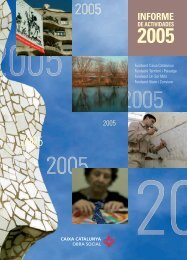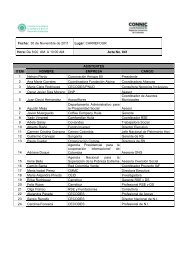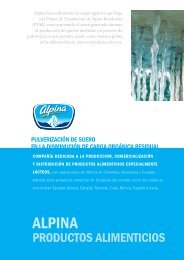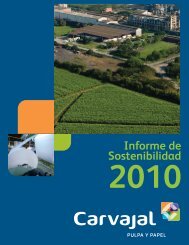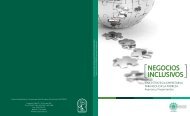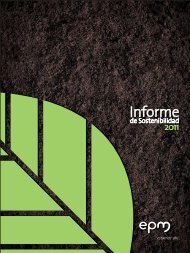Setting new standards - Friends Life
Setting new standards - Friends Life
Setting new standards - Friends Life
You also want an ePaper? Increase the reach of your titles
YUMPU automatically turns print PDFs into web optimized ePapers that Google loves.
FINANCIAL STATEMENTS<br />
IFRS FINANCIAL STATEMENTS<br />
EEV SUPPLEMENTARY INFORMATION<br />
Notes to the consolidated accounts continued<br />
30. Risk management objectives and policies for mitigating risks continued<br />
Concentrations of credit risk might exist where the Group has significant exposure to an individual counterparty or to a group of<br />
counterparties with similar economic characteristics that would cause their ability to meet contractual obligations to be similarly affected by<br />
changes in economic and other conditions. The Group has most of its counterparty risk within its <strong>Life</strong> & Pensions business. As noted above<br />
this is monitored by the counterparty limits contained within the Group’s investment guidelines, overlaid with regulatory requirements.<br />
F&C is exposed to a concentration of credit risk to the extent of timing differences between the recognition of income for services rendered<br />
and the timing of receipt of management fees from clients. The specific concentration of risk from clients where trade debtors and accrued<br />
income for any one client or group of connected clients is £1m or more at 31 December is as follows:<br />
2006 2005<br />
Amounts due from: £m £m<br />
The Achmea group 4 6<br />
Resolution <strong>Life</strong> plc - 3<br />
RSA plc 1 1<br />
OEICs (management fees) 3 3<br />
8 13<br />
Certain derivatives are subject to a legal right of set-off.<br />
The amount disclosed in the balance sheet in respect of financial assets represents the Group’s maximum exposure to credit risk.<br />
An indication of the Group’s exposure to credit risk is the quality of the investments and counterparties with which it transacts. The Group is<br />
most exposed to credit risk on debt and other fixed income securities, derivative financial instruments, deposits with credit institutions,<br />
reinsurance arrangements and cash and cash equivalents. Debt and other fixed income securities mainly comprise government bonds and<br />
corporate bonds. Given the nature of the Group’s investments in government bonds the credit risk associated with these is considered small<br />
and the Group therefore focuses on monitoring the quality of its corporate bonds.<br />
The following table gives an indication of the level of creditworthiness of those categories of assets which are most exposed to credit risk<br />
using principally ratings prescribed by Standard & Poor’s and Moody’s. Assets held within unit-linked funds have been excluded from the table<br />
below as the credit risk on these assets is borne by the policyholders rather than the shareholders.<br />
31 December 2006<br />
AAA AA A BBB BB B Not rated Total<br />
£m £m £m £m £m £m £m £m<br />
Corporate bonds 2,641 1,676 2,424 652 7 7 210 7,617<br />
Derivative financial instruments - 181 1 - - - - 182<br />
Reinsurance assets - 85 - - - - - 85<br />
31 December 2005<br />
AAA AA A BBB BB B Not rated Total<br />
£m £m £m £m £m £m £m £m<br />
Corporate bonds 2,952 1,900 2,810 703 - - 276 8,641<br />
Derivative financial instruments - 24 225 - - - - 249<br />
Reinsurance assets - 26 157 - - - - 183<br />
150 <strong>Friends</strong> Provident Annual Report & Accounts 2006







